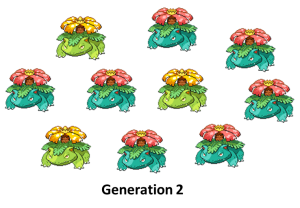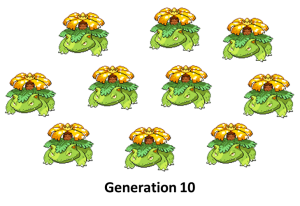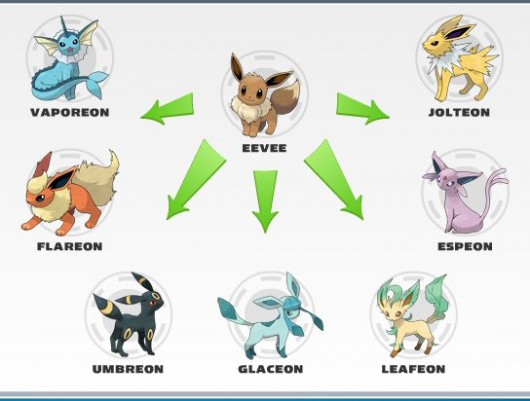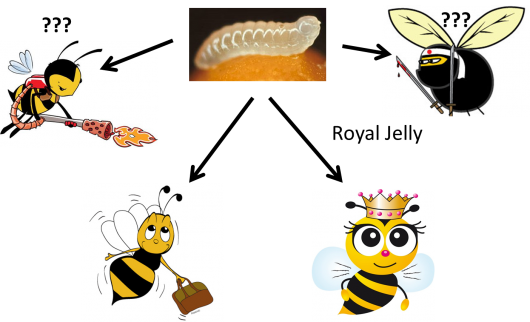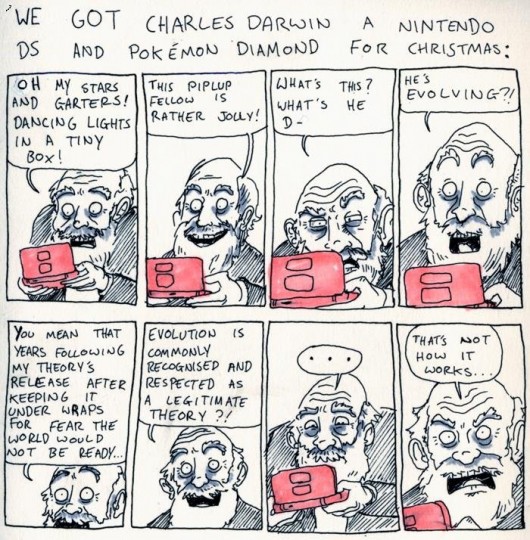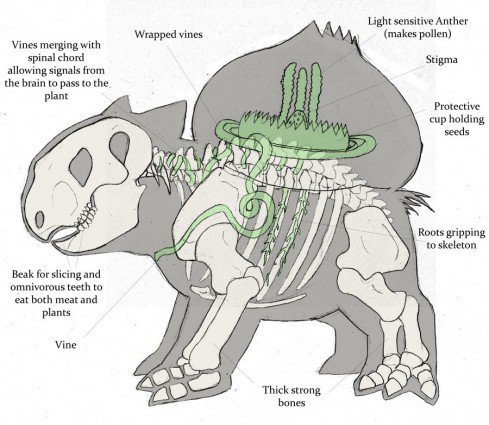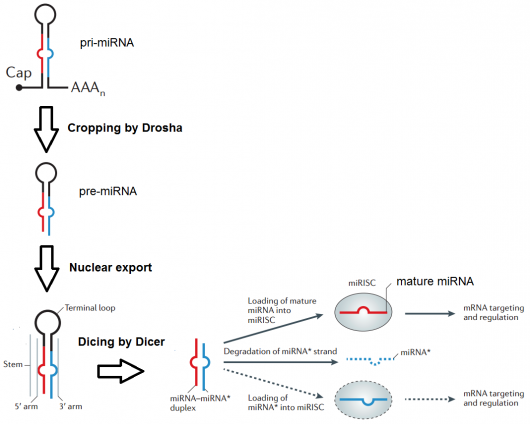First off – yes, I’m alive.
Even though my blogging frequency has been pretty pathetic recently, I still get a steady trickle of emails from concerned readers who miss me. It’s an odd feeling knowing total strangers want to make sure I’m okay and miss my writing, but I do sincerely appreciate it (even if I don’t reply, sorry). It also makes me realize that not everyone follows my twitter feed, so many of you have no idea what has been going on in my life.
No, it’s not just grad school that’s been keeping me busy. These have been the hardest months of my life.
On March 15th, my mom called me. My family knows I hate talking on the phone, so when my phone is ringing and it’s not a holiday, I assume something is wrong. Usually that’s just my irrational anxiety talking, but unfortunately this time it was right. It was news I never wanted to hear – my mom had cancer again.
She had been cancer free for 8 years, after winning her battle against breast cancer during my senior year of high school. I hate to say this, but I had never been truly worried during that time. Part of it was knowing they caught it soon and that she had wonderful doctors, but part of it was definitely being a naive 17 year old. At the time I didn’t realize it, but my parents had painted a rosy picture of the situation to keep me from worrying. What I remember is my mom scheduling her chemo appointments around my high school golf matches, because she didn’t want to miss them for the world. The worst of it was kept behind the scenes.
But now I was a little bit older and wiser. In this case, being a geneticist was not very comforting. I was more aware of the realities of a cancer diagnosis, especially when cancer had come back. But I tried to stay cautiously optimistic, since there was still no official diagnosis.
A week later one morning, I was laying awake in bed worrying about my mom. My phone rang, and this time it was my dad. Getting a phone call in the morning is even more terrifying, and I knew instantly from his voice that something was horribly wrong.
He told me my mom was going to die within hours.
Hearing that out of nowhere, while stuck thousands of miles away across the country, was… I don’t even have an adjective that can describe that. Horrifying? Devastating? I was literally in hysterics, sobbing and shaking for hours. It felt like a nightmare come true. I’m so glad my boyfriend had been there, because I don’t know what I would have done without his immediate support. In the span of a week my mom had gone from perfectly healthy, living the stereotypical retired life golfing in Florida, to “going to die.”
A couple of days earlier, my mom had fluid (caused by the cancer) removed from her abdomen, and that change in pressure had caused massive blood clots to move from her legs to her lungs. “Why didn’t the doctors check for that ahead of time?” I asked myself. She couldn’t breathe. She had a 10% chance of making it, but thankfully our hometown hospital is one of the top 50 in the nation and had a cardiologist present that specialized in dealing with this problem. Also thankfully this happened at 7am on a Sunday morning, so the emergency room was empty. Who knows what would have happened to her if she hadn’t been the only patient there.
She survived. I flew out the next day to be with her.
Even though the clots had been removed, there was little emotional relief. When I got there, we were bluntly told that she may never wake up from sedation at all, or if she did she could be a vegetable. The first thing I saw when I arrived was that her tongue had swollen to grotesque proportions, filling her whole mouth and spilling out. The doctors still have no idea what was going on there and originally blamed the tape holding her breathing tube in, though my dad and I suspect they accidentally gave her antibiotics that she’s allergic to and wouldn’t admit it. When I noticed her face was starting to swell as well, they ignored me…until we had come back from lunch and her whole head had swollen up. It was devastating seeing her like that – seeing someone you love and thinking “that can’t be my mother.” Once her whole head was ballooning up, they finally admitted I had been right, and maybe they should start trying to reduce the swelling. Yeah, you’d think.
(I wish the tongue thing was the only time we dealt with incompetence from doctors and nurses… They constantly ignored call buttons for 30 minutes to an hour and I had to go run and find nurses in emergencies, they tried to give her medicine for other patients which thankfully my dad caught, they tried to give medicine in her left arm despite signs everywhere saying not to do so, some wouldn’t use gloves and were obviously not using sterile technique, doctors fought in front of her which destroyed her confidence in them… Yes, they saved her life, but at the same time my faith in doctors has definitely been shaken.)
Thankfully again, my mom beat the odds. After a couple of days she woke up. We talked by her first pointing to letters on a sheet, then by her writing, and after weeks she was able to barely speak. I can now say that months later, she can talk fairly normally and has all of her mental faculties. I feel like I can’t even thank science or medicine here – she got lucky.
The problem was, you know, my mom still had cancer. And the equivalent of a massive heart attack followed by aggressive weekly chemotherapy is not exactly a good situation. She was getting chemo even when she was still bedridden and unable to walk. She was in the hospital for 90 days, but thankfully has been home for about a month now (and is still getting chemo). Just imagine not being able to leave a hospital room for three months – no sunshine, no idea if it’s day or night, no food (thanks to the swollen tongue)… You don’t even realize the little things you take for granted, like being able to cuddle with your pet or wear your own pajamas.
As for the cancer, the chemo does seem to be working very well, which makes me rejoice. We were glad to find out it wasn’t breast cancer again, because that would have been the worst prognosis. Unfortunately, it was ovarian cancer, which is scary in its own right. We have no family history of breast or ovarian cancer, but having both occur independently in the same individual is a huge red flag that the cancer may be heritable – that is, that her genome has some mutation that predisposes her to that type of cancer. If correct, that means I would have a 50% chance of having that same mutation.
My mom could honestly care less what her genome is, since it wouldn’t really change her treatment (“Yep, you still need chemo”). But she wanted to get genetic testing for my sake. Thankfully her results said she has normal copies of BRCA1 and BRCA2, the two main breast cancer genes. Having a mutant copy of one of those greatly increases your odds of getting cancer, so hearing that news was a relief. But to a geneticist, it was a minor relief. I knew there were dozens of genes that could contribute to cancer, and dozens more that we probably haven’t even figured out yet. This just ruled out the common problems.
After my parents told her genetic counselor that I was getting my PhD in genomics, the counselor decided she would just rather talk to me directly. We chatted on the phone and she discussed how she wanted to test a larger number of genes, especially since gastrointestinal cancer runs in my mom’s family and may be related to her case. She told me her current problem – getting my mom’s insurance company to okay the test. She explained how insurance companies don’t like tests that utilize modern technology like next generation sequencing, because they rather have you pay a deductible on each individual gene than have one test that covers the whole genome.
(Yeah, they rather squeeze more money out of their dying cancer patients than do an efficient test. I never had any faith in the insurance industry to be able to say I lost it, but let’s just say my rage against them has grown. At least my parents have insurance, because after a month of treatment alone the bill was at one MILLION dollars. It’s horrible enough worrying about my mom’s health; I’m glad I don’t have to worry about their sudden bankruptcy as well.)
But I knew something this genetic counselor did not. I told her that Mary-Claire King, the scientist who discovered BRCA1 & BRCA2, worked in my department and did a cancer gene panel that was twice as large as the one the counselor was considering. After the counselor got done fangirling and squeeing over Mary-Claire (no, really, nerd glee), she asked if I could try to get my mom enrolled in MCK’s study. All it took was one email, and minutes later MCK had said yes. My mom no longer had to worry about insurance, she would learn more about her genome than from some company’s test, and she’d contribute to a growing body of knowledge about cancer genetics.
While I’m relieved to know I’ll have this information, it has been an emotional process. Part of me is terrified for myself. I’ve seen how cancer has affected my mom. The physical weakness, the loss of hair (which can really hurt a woman’s self-esteem), the inability to eat (how I wish Indiana had medical marijuana, or that I could smuggle some from Seattle). Not to mention the giant cloud of doom reminding you that, yeah, you may die from this. It really scares me wondering if I’ll have to go through the same thing when I’m her age, or if I’ll get unlucky and it’ll strike me sooner.
And at the same time, I feel guilty for worrying about myself at all. I feel selfish worrying about what might happen to me in 30 years, compared to what’s happening to my mother right now. I feel guilty that I can only visit her a little bit before I have to come back to work, even though she’s told me that me finishing my PhD is the most important thing to her. I feel guilty that my dad has to be her full-time caretaker and home nurse now, while I get to go “back to normal.” I feel guilty every time I have a moment of happiness when I’m back in Seattle, because I feel like I should always be worrying about her.
I’ve never been good at prioritizing taking care of myself, but now it feels damn near impossible.
And that’s partly why I’ve been so depressed the last couple of months. Worrying about my mom, worrying about myself, feeling guilty about worrying about myself… I wish those were the only things stressing me out, because I could barely handle those. My boyfriend is graduating with his PhD this year (yay!) but that means we’re worried that he won’t be able to find a job in Seattle and will have to move far away (not yay). Grad school has been rough (which is a redundant statement, right?). I’ve been feeling very lost and without guidance for a while now, since my project is very unique and I’ve basically created it from the ground up (or as another grad student told me, I went straight from undergrad to a postdoc). My current experiments aren’t working, and even though troubleshooting lab work is totally normal, it can be crushing when you’re already down. It makes me feel like a failure and an imposter who shouldn’t even be in grad school. My lab is also having some funding woes, so I feel a lot of pressure not to screw anything up or waste supplies because we may not have the money for a round two. The cherry on top is that the two other grad students in my lab are graduating in the next month, so I will be the only graduate student left. I already felt lost and alone, but now it’s just going to be me, my adviser, and our research scientist.
The problem with depression is that even if you have understandable reasons to be depressed, it can make you unreasonable about everything else. I have particularly bad anhedonia – nothing really give me any pleasure. When asked to list my hobbies, I list things I used to enjoy. I have no motivation to do anything, even “fun” things. Getting out of bed in the morning is a chore. I haven’t had an appetite in weeks, but I just keep feeding myself because I know I have to. I had convinced myself I had no friends who actually cared about me or wanted to hang out with me, which turned me into an even more lonely hermit. I’ve lost all of my goals and dreams, and when I think about the future I just despair. Every news article or opinion piece I read just makes me think how fucked and unfixable the world is, and I feel hopeless to do anything to make the world better.
And the fucked up thing about depression is that it convinces you that all of this is true, and you are the problem. Depression is like having sunglasses glued to your head and insisting the world is dark, even when you rationally know its bright. I was literally convinced for months that there was no hope in the future and that I would never feel happy again. Right now I can’t remember what it feels like to be happy. It wasn’t until yesterday that I had a small moment of clarity when I realized that my brain was lying to me. Not only that my brain was lying to me, but that I had gone through this exact thing before! There have been many times in my life where I’ve felt this way, but happiness and motivation and normalcy always came back eventually. I need to remind myself that this too shall pass.
I’m attempting therapy again (thank you, Secular Therapist Project). At least this time I’m pretty sure they won’t suggest Buddhism and spirituality as the solution (no thank you, University of Washington mental health services). Unfortunately the health insurance they give us grad students is kind of crap, so it looks like I’ll be paying mostly out of pocket for it. But thankfully I have a good amount of savings and just got a raise (thank you, National Science Foundation) so it won’t be a huge issue, and I’m trying to start viewing my mental health as something worth investing in. This isn’t a pity call for money – if you feel the urge to donate, pick your favorite cancer research charity and that will make me happy.
I don’t really have a take home message or wrap up for this post. I simply realized that writing has always been therapeutic for me, and when I quit blogging I threw away that therapy along with a social support network (you guys!). I’ve been meaning to get this off my chest, so here it is.
Dear life: Please stop sucking soon.
kthx,
Jen




